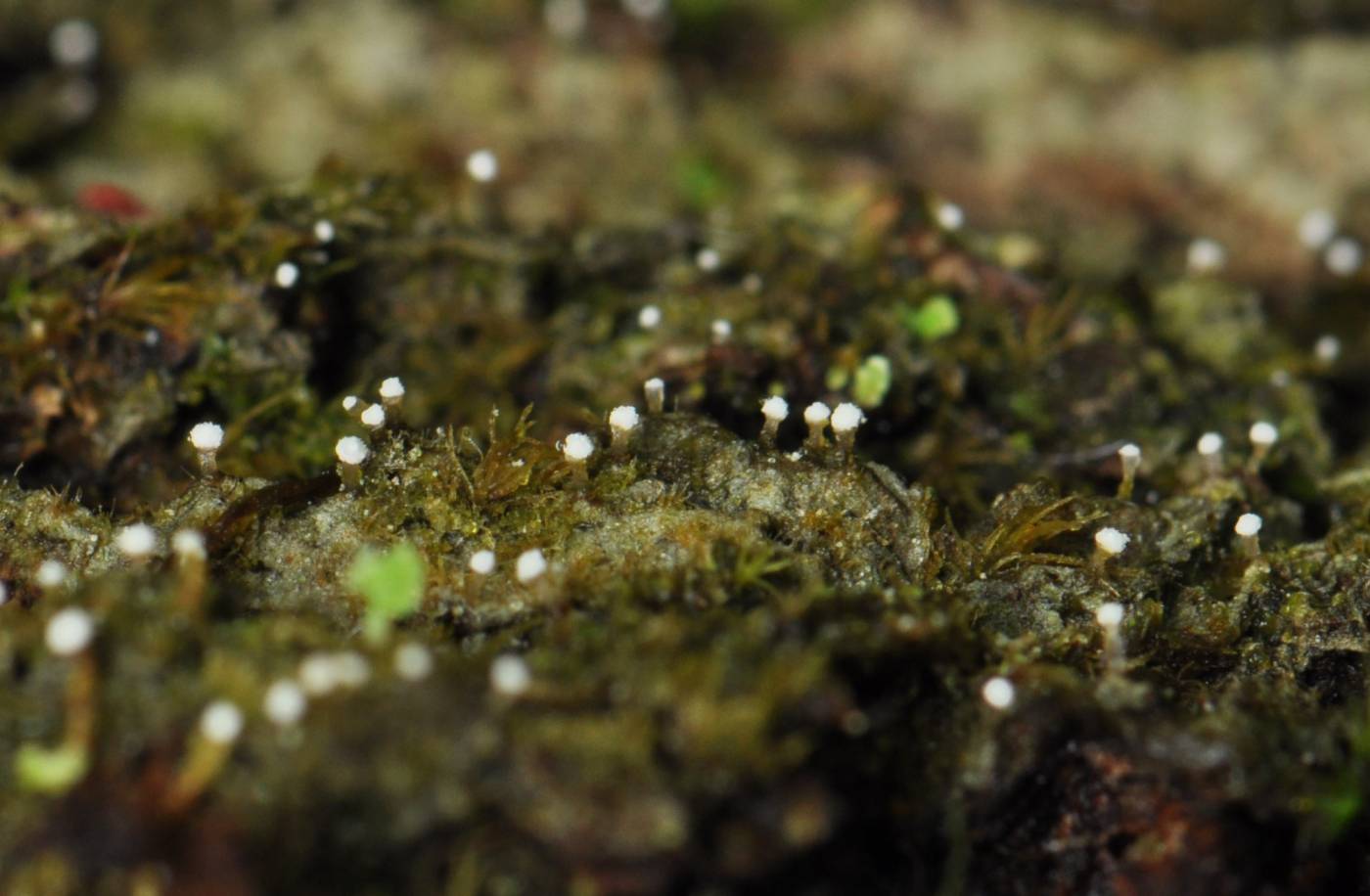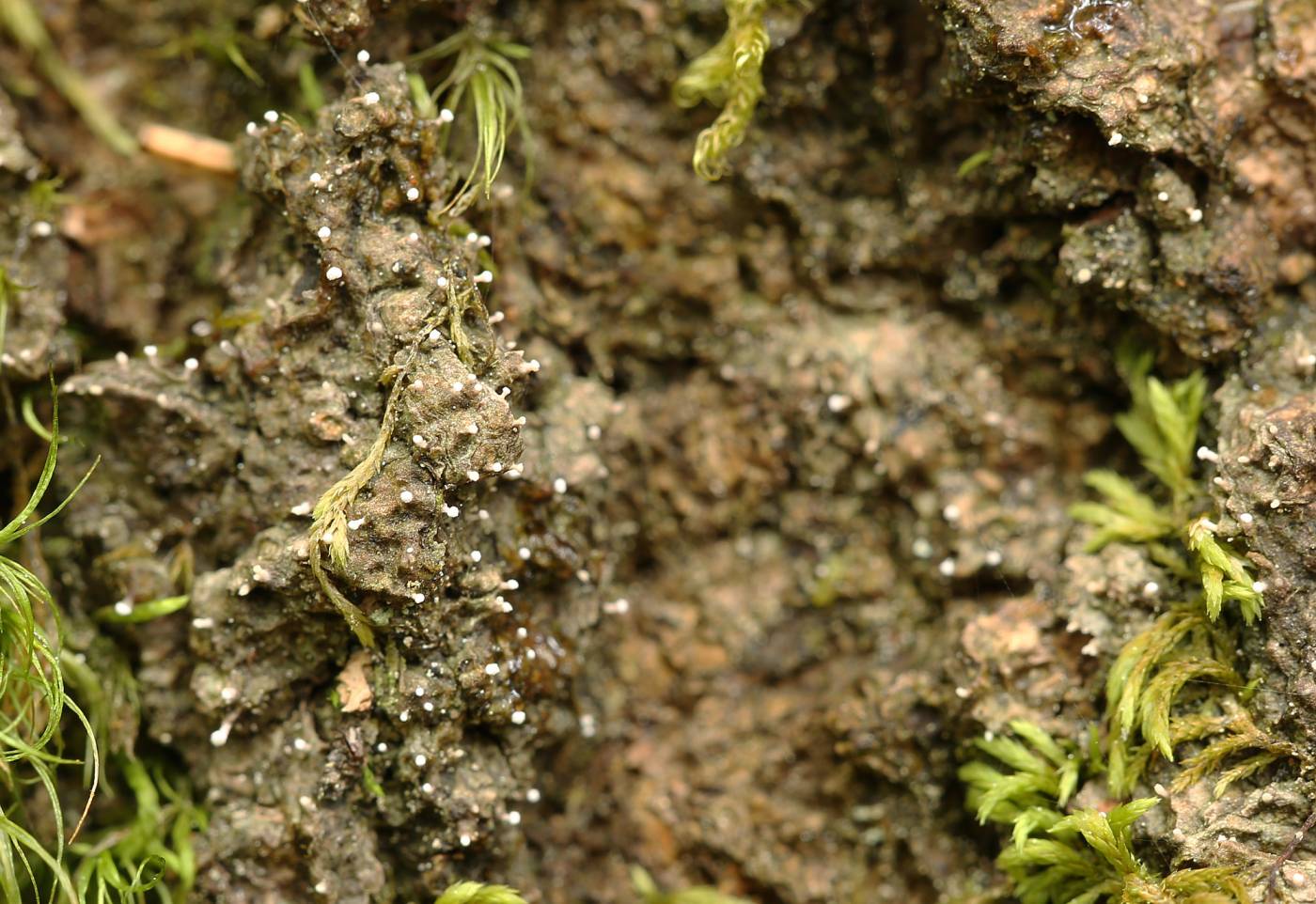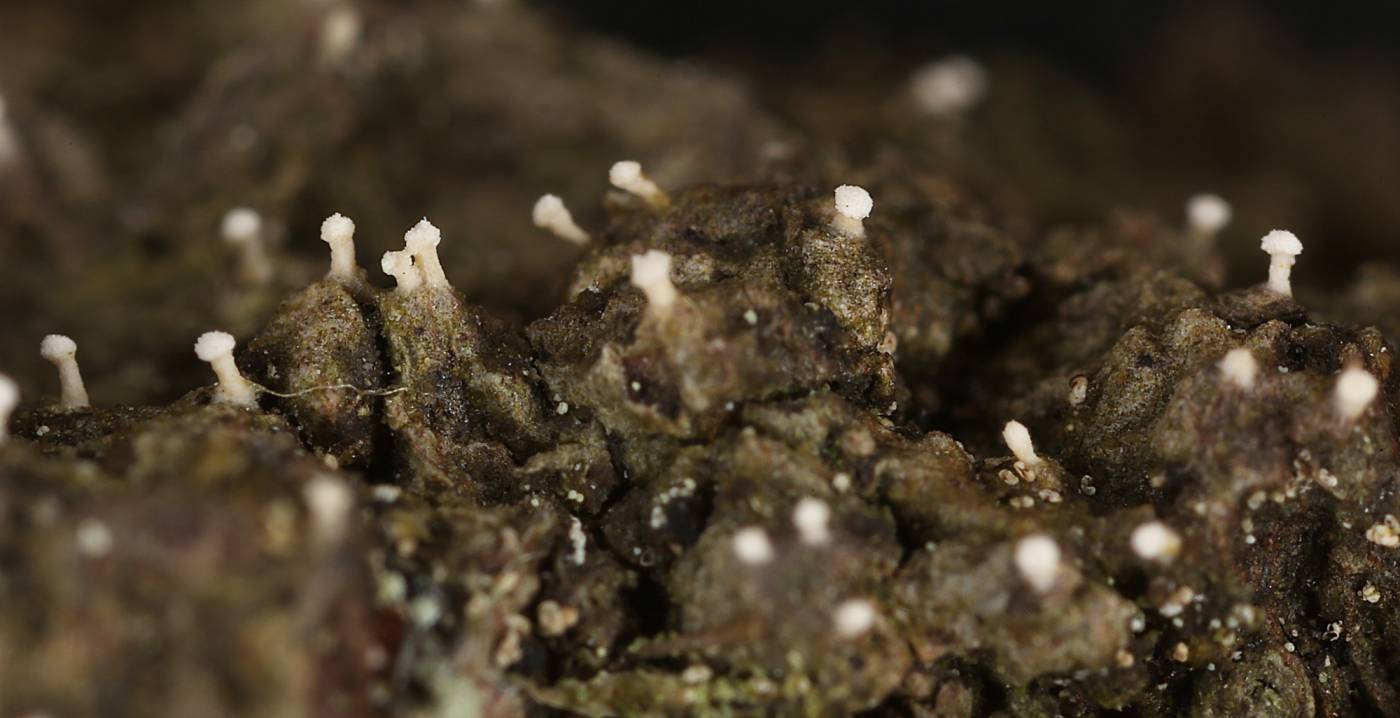A lichen hardly mistaken for other species, belonging between the so called “synnematal hyphomycetes”, i.e. asexual fungi stages occurring as anamorphs. Long, stalked, white synnemata releasing conidia from their tops are characteristic. Synnemata usually occur at shaded tree bases and rootstocks of beeches and maples in old beech forests. They often grow in places where all other lichens are (apparently) missing. Dictyocatenulata alba is often abundant also on young trees. Its typical habitats are permanently humid old-growth forests and valleys of forest brooks. However, large populations have been recorded also in young managed forests in the Czech Republic. The lichen is distributed across the whole Northern Hemisphere, but has been found in Europe and the Czech Republic quite recently (Diederich et al 2008) and still, it is reported sparsely. The species occurs in most of the higher Czech mountains and has been found even in well-preserved forest reservations in the central part of the country.
Literature: Diederich P., Palice Z. & Ertz D. (2008): Cheiromycina ananas is a synonym of Dictyocatenulata alba, a widespread, lichenized, synnematous hyphomycete herewith reported as new for Europe. – Sauteria 15: 205–214.
taxonomic classification:Ascomycota → Lecanoromycetes → Ostropales → Thelenellaceae → Dictyocatenulata
Red List (Liška & Palice 2010):EN – endangered
Red List (Malíček 2023):C3 – endangered
Occurrence in the Czech Republic
All records: 61, confirmed 60. One click on a selected square displays particular record(s), including their source(s).


